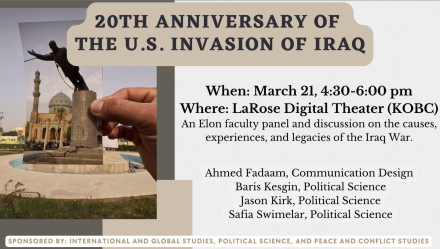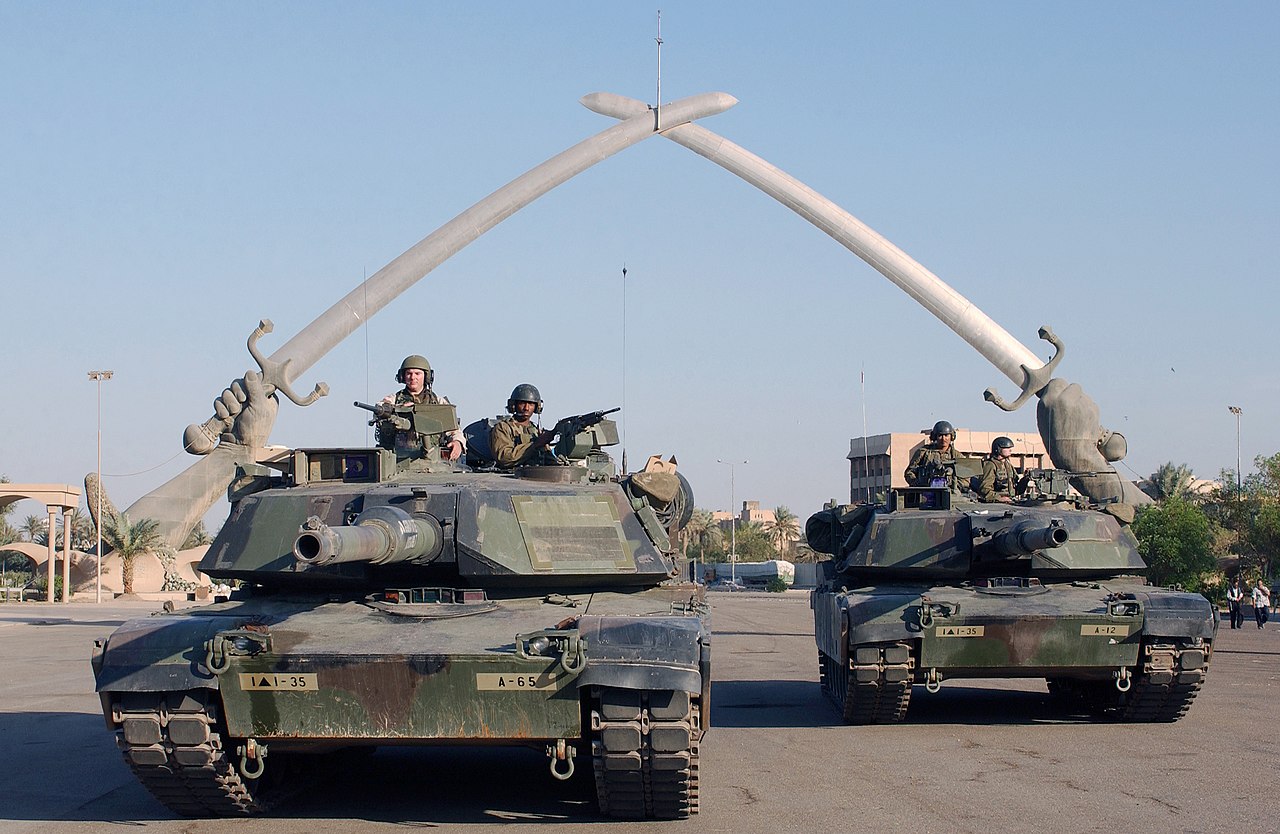The discussion centered around two documentaries and focused on the legacy of the invasion that took place two decades ago following the 9/11 attacks.
Members of the Elon community gathered in LaRose Digital Theater on Tuesday, March 21, to commemorate the 20th anniversary of the invasion of Iraq by U.S. troops and to learn more about the impact of the war in Iraq ranging from its origins to the present day.
 Professor Jason Kirk, Associate Professor Baris Kesgin and Professor Safia Swimelar from the Department of Political Science and Policy Studies shared their thoughts about the legacy of the war while Ahmed Fadaam, assistant professor of communication design, offered the first public viewing of his documentary showcasing his personal experiences from the war as a citizen of Baghdad.
Professor Jason Kirk, Associate Professor Baris Kesgin and Professor Safia Swimelar from the Department of Political Science and Policy Studies shared their thoughts about the legacy of the war while Ahmed Fadaam, assistant professor of communication design, offered the first public viewing of his documentary showcasing his personal experiences from the war as a citizen of Baghdad.
The presentation was split up into two parts, with excerpts from two films anchoring the discussions.
The first documentary by filmmaker Charles Ferguson, “No End in Sight,” gave a glimpse into what the occupation of Iraq was like for people involved through the U.S. military and the burden of their experiences. It depicted real-life recordings and disturbing graphics of the events and highlighted the horrific reality that victims faced on a day-to-day basis. Additionally, the film summarized statistics of destruction, reporting that Baghdad received 10 to 15 bombs per day, which many believe underestimates the number. The city enforced a curfew of 8 p.m. as of March 2006.
Swimelar presented statistics from Brown University to the audience that described the costs of war socially, politically, and economically. It has been reported that 7,000 U.S. soldiers lost their lives, and 30,000 suicides among U.S. service members and veterans of post-9/11 war operations.
“We don’t realize war has very long-term effects on civilians and the kind of trauma they are dealing with after Iraq,” Swimelar explained. “These statistics urge us as a nation to work further on the mental health of veterans in adjusting to a post-war life.”
Along with sharing insights into the war’s legacy, panelists shared with the audience their memories of processing the invasion two decades ago. “I was in graduate school at the times of these events and was just trying to understand it” Kirk explained. “My impulse was to try to read as much as I could, watch documentaries, and follow the news.”
Fadaam taught at the Academy of Fine Arts in Baghdad until 2003 but eventually relocated to the United States. He received multiple death threats for working with the media and needed to move his wife and children around to ensure their safety.
Many Iraq children died due to lack of food and medicine and other vital supplies not being sent to their country, in addition to an average of 50 attacks a day by American armed forces. To help tell his story, Fadaam integrated his own drawings, part of a larger graphic novel, into the film.
“Death became so usual to us. I lost count of how many dead bodies I’ve seen,” Faadam explained in his film. “I have videos of me walking over fully burned dead bodies. This is what we were experiencing every day.”
The event was sponsored by the Department of Political Science, the International and Global Studies program and the Peace and Conflict Studies program.



